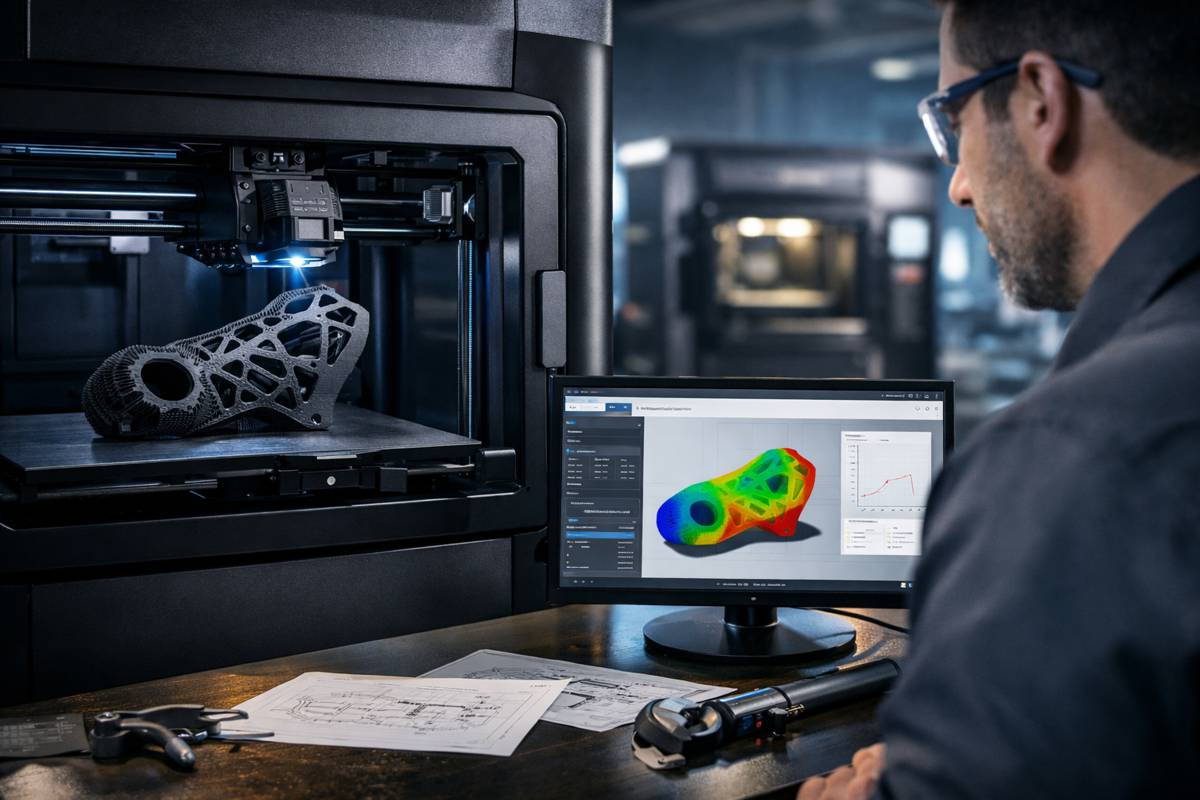Replacing Steel Floors with 3D Printed Sustainable Floor Panels
Researchers at the Department of Energy’s Oak Ridge National Laboratory and the University of Maine have designed and 3D-printed a single-piece, recyclable natural-material floor panel tested to be strong enough to replace construction materials like steel.
The project is part of the Sustainable Materials & Manufacturing Alliance for Renewable Technologies, or SM2ART, program. The SM2ART team previously constructed BioHome3D, the nation’s first additively manufactured home made entirely from biologically based materials.
BioHome3D’s components and the floor panel were recently displayed during the U.S. Dept. of Housing and Urban Development’s 2024 Housing Innovation Showcase on the National Mall.
The SM2ART Nfloor cassette panel was developed to replace traditional steel-and-concrete surface assemblies as a transformative step for constructing apartment and condominium buildings. The technology has the potential to create strong, biologically based sections that could make multi-storey buildings more environmentally friendly. It could also help increase the use of sustainable structures that are made in a modular construction facility.
Modular, or panelized, manufacturing creates complete sections of a building at an offsite factory before delivery to a construction site for final assembly. The method is becoming a cost-effective way to develop sustainable residential structures in urban areas.
ORNL researcher Katie Copenhaver said this first effort to make a strong building floor panel from green resources significantly advances the potential for increasing the use of organic materials in modular, multi-residential buildings. “By utilizing bio-based, large-scale 3D printing, we replaced an assembly made from 31 parts and three materials with a single-material floor panel that is ecologically friendly,” she said, “and with the same strength as traditional steel floor fabrication.”
The SM2ART floor cassette’s sturdiness comes from its unique formulation of polylactic acid, or PLA, which is a biodegradable thermoplastic-polyester bioplastic derived from corn residue and wood flour made from the waste of lumber processing. “The PLA and wood flour blend is an excellent material for producing recyclable, large-format additively manufactured parts,” said Scott Tomlinson, structural engineer with the University of Maine’s Advanced Structures and Composites Center. “This single-piece floor assembly is stiffer and provides an improved walking experience when compared to the steel-concrete assembly it replaces.”

To construct the floor panel, researchers used a large-scale 3D printer to deposit the PLA/wood flour mixture in a precise, geometric shape. By working continuously and autonomously, the printer produced the SM2ART Nfloor cassette at scale, layer upon layer, in about 30 hours. The process created a labour-savings of about 33% compared to the effort needed to construct a similar steel floor assembly by hand.
A significant cost of a traditional steel frame comes from workers cutting channels for electrical conduit, plumbing lines and ductwork for heating, ventilation and air conditioning after the steel floor assembly is nearly completed. “3D printing can save time and money by printing the floor cassette with cut-outs designed into the finished product,” said Copenhaver. “The only human labor involves installing acoustic skin for sound proofing and the resident’s desired floor covering.”
The SM2ART Nfloor cassette also is fully recyclable. Unlike building materials that are hauled to a landfill after a traditionally constructed building reaches the end of its useful life, PLA is a renewable material that can be repurposed to make other products after demolition. This approach toward a more circular economy provides the ability to continually recycle a resource instead of discarding it as waste.
The idea for the research project was suggested to the SM2ART team by SHoP Architects, a New York City-based architectural design firm. “They asked if we could mass-produce floor panels more efficiently with greener materials and additive manufacturing,” said Copenhaver. “Figuring out something new, considering different variables, is a hallmark of ORNL. Through experimentation, we worked out the right speeds and made the tweaks needed to reliably produce a finished part with the desired finished look and quality.”
The Nfloor project is in its initial stages of development. Additional research will involve flame retardants, the potential for adding sustainable insulation and improving production techniques. “The next steps will be to make the manufacturing process faster, more efficient and cost-effective with additional functionality,” UMaine’s Tomlinson said. “This technology holds a lot of promise for the future of sustainable buildings.”
Research for the SM2ART Nfloor cassette continues at DOE’s Manufacturing Demonstration Facility at ORNL, with design work and 3D printing performed at the University of Maine’s Advanced Structures & Composites Center. The ASCC is an interdisciplinary center for research, education and economic development encompassing materials sciences, advanced manufacturing and engineering of composites and structures. The MDF, supported by DOE’s Advanced Materials and Manufacturing Technologies Office, is a nationwide consortium of collaborators working with ORNL to innovate, inspire and catalyse the transformation of U.S. manufacturing.
UT-Battelle manages ORNL for the Department of Energy’s Office of Science, the single largest supporter of basic research in the physical sciences in the United States. The Office of Science is working to address some of the most pressing challenges of our time.




















